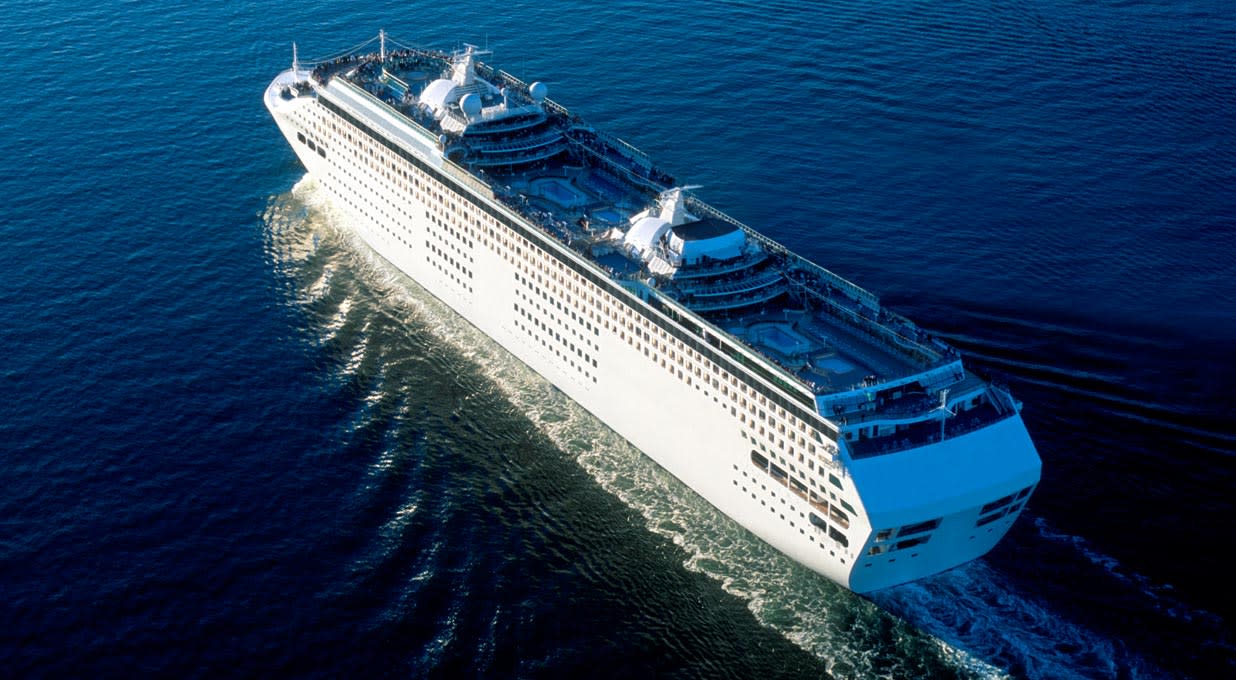Carnival saw full year revenue fall 66% to $1.9bn as the group carried 1.2bn passengers, down 65% from 2019. The group was able to rein in operating losses by 20%, to $7.1bn, owing largely to fewer write-downs on the value of cruise ships.
As of 13 January, 67% of capacity had resumed operation and the full fleet is still expected back by the summer season. However, the group warned cancelations have impacted near-term bookings and "in the last few weeks we have seen a dampening of the booking activity for the second half of 2022 relative to 2019."
The shares fell 5.5% in early trading.
View the latest Carnival share price and how to deal
Our view
Cruise ships come with very high fixed costs. Costs that have to be paid whether they leave the port or not.
Even now, after a huge round of cost cuts and 67% of its group capacity in operation, Carnival's burning through cash every month. As you can imagine, that leaves a large mark on the balance sheet.
Carnival's debt position is a concern, and, as you'd expect, it's significantly up over the past year. Refinancing efforts will help the situation, pushing back repayment dates and reducing interest expenses. But even so, that level of debt is much higher than we're comfortable with.
Getting the balance sheet under control is going to be the main priority and will hold the business back for years to come. Commentary on bookings has flip-flopped a little, with the most recent update suggesting summer bookings might be losing steam. As profits are expected to return in the second half of the year, maintaining momentum on summer bookings is key.
Even as Carnival returns to the seas, it's operating below capacity, and this will continue for some time. Positive tests, or a lack of testing availability altogether, has proved a thorn in the side more recently leading to increased cancelations. Even once passengers are safely onboard, floating around with thousands of people in close quarters requires a great deal of spend to ensure compliance with public health regulation - not to mention high oil prices will add to the cost to cruise. These costs are expected to remain a burden until 2023.
Longer term reservations look promising for both demand and pricing. We'd been concerned that pricing would have to drop to attract customers back. It's welcome news that this hasn't been the case, considering last we heard operating margins were alarmingly negative.
Carnival's future depends on how quickly the travel industry rebounds, and the group's competitive position when it does. The group's brands cater to specific populations (for example Carnival targets families and Seabourne luxury travellers), something competitors try to blend by straddling the two price points. And with ports located within 5 hours of many of the US population, Carnival has carved out a unique value proposition in its largest market.
The now leaner organisation leaves room for more profit potential when the full fleet is back in action. The crucial summer period will be key for assessing where demand is, and how well the group's positioned to act on it. Given the uncertainty ahead and the group's difficult financial position, investors should proceed with caution.
Carnival key facts
All ratios are sourced from Refinitiv. Please remember yields are variable and not a reliable indicator of future income. Keep in mind key figures shouldn't be looked at on their own - it's important to understand the big picture.
Full Year Results
Revenue in North America & Australia fell 69% to $1.1bn, with passenger ticket and onboard revenue falling 76% and 57% respectively. Lower operating costs and the effect of ship write-downs last year meant operating losses improved from $5.8bn to $3.9bn.
Europe and Asia saw revenue drop 60% to $712m, with passenger ticket sales down 65% and onboard revenue down 45%. Lower costs meant operating losses were $2.6bn, an improvement from $2.7m last year.
As of 30 November 2021, the group had a working capital deficit of $300m, down from a surplus of $1.9bn the year before. That's largely due to an increase in customer deposits and a drop in cash. Current working capital includes $3.1bn of deposits, which are recorded as liabilities until the departure date, as such the group expects to operate in a working capital deficit under normal conditions.
Net debt, including long term leases, rose to $25.5bn from $18.7bn last year. Higher profits meant the group's free cash outflow of $7.7bn improved from an outflow of $9.9bn last year.
This article is original Hargreaves Lansdown content, published by Hargreaves Lansdown. It was correct as at the date of publication, and our views may have changed since then. Unless otherwise stated estimates, including prospective yields, are a consensus of analyst forecasts provided by Refinitiv. These estimates are not a reliable indicator of future performance. Yields are variable and not guaranteed. Investments rise and fall in value so investors could make a loss.
This article is not advice or a recommendation to buy, sell or hold any investment. No view is given on the present or future value or price of any investment, and investors should form their own view on any proposed investment. This article has not been prepared in accordance with legal requirements designed to promote the independence of investment research and is considered a marketing communication. Non-independent research is not subject to FCA rules prohibiting dealing ahead of research, however HL has put controls in place (including dealing restrictions, physical and information barriers) to manage potential conflicts of interest presented by such dealing. Please see our full non-independent research disclosure for more information.


